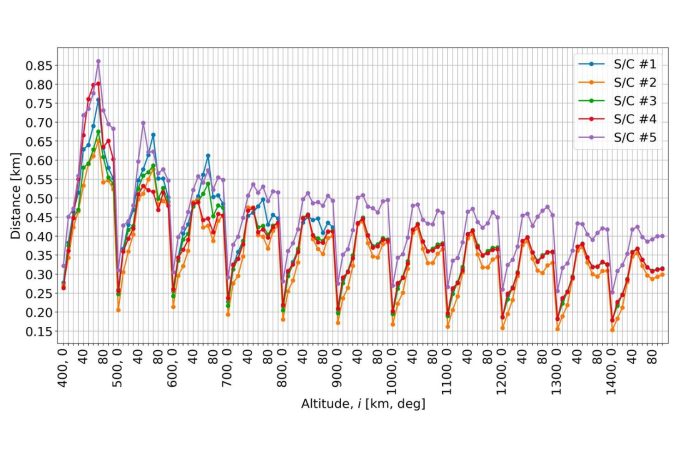
Orbital tolerance and intrinsic orbital capacity for electric propulsion constellations
Researchers in the Astrodynamics, Space Robotics, and Controls Lab (ARCLab) use current and advanced technologies to simulate how keeping satellites in their proper paths affects the safe distances between them, both within the same orbit layer and between different orbit layers in a high-fidelity environment. The results enhance the accuracy of intrinsic orbital capacity estimates and clarify the factors that impact the number of admissible satellite locations in low Earth orbit.
Authors: Giovanni Lavezzi, Miles Lifson, Simone Servadio, and Richard Linares
Citation: Journal of Spacecraft and Rockets, https://arc.aiaa.org/doi/10.2514/1.A35875
Abstract
Large constellations are typically designed using sets of periodic orbits and satellite control boxes sized to ensure compatible phasing between coorbital constellation planes to prevent conjunction events. This work investigates how the control action for orbit maintenance influences feasible intrashell and intershell distances in a satellite constellation.
Two-dimensional lattice flower constellations are simulated in an environment inclusive of orbital perturbations, with onboard sensors and an electric propulsion system constituting the satellite guidance, navigation, and control system. An analysis to define estimates for minimum separation distances is performed as a function of control, propulsion, orbit, environmental, and spacecraft characteristics. An estimate of the intrinsic (geometric) orbital capacity is proposed, based on current and advanced technologies, in order to quantify the number of admissible spacecraft and orbital shells in a selected altitude range. Simulation results are used to improve

